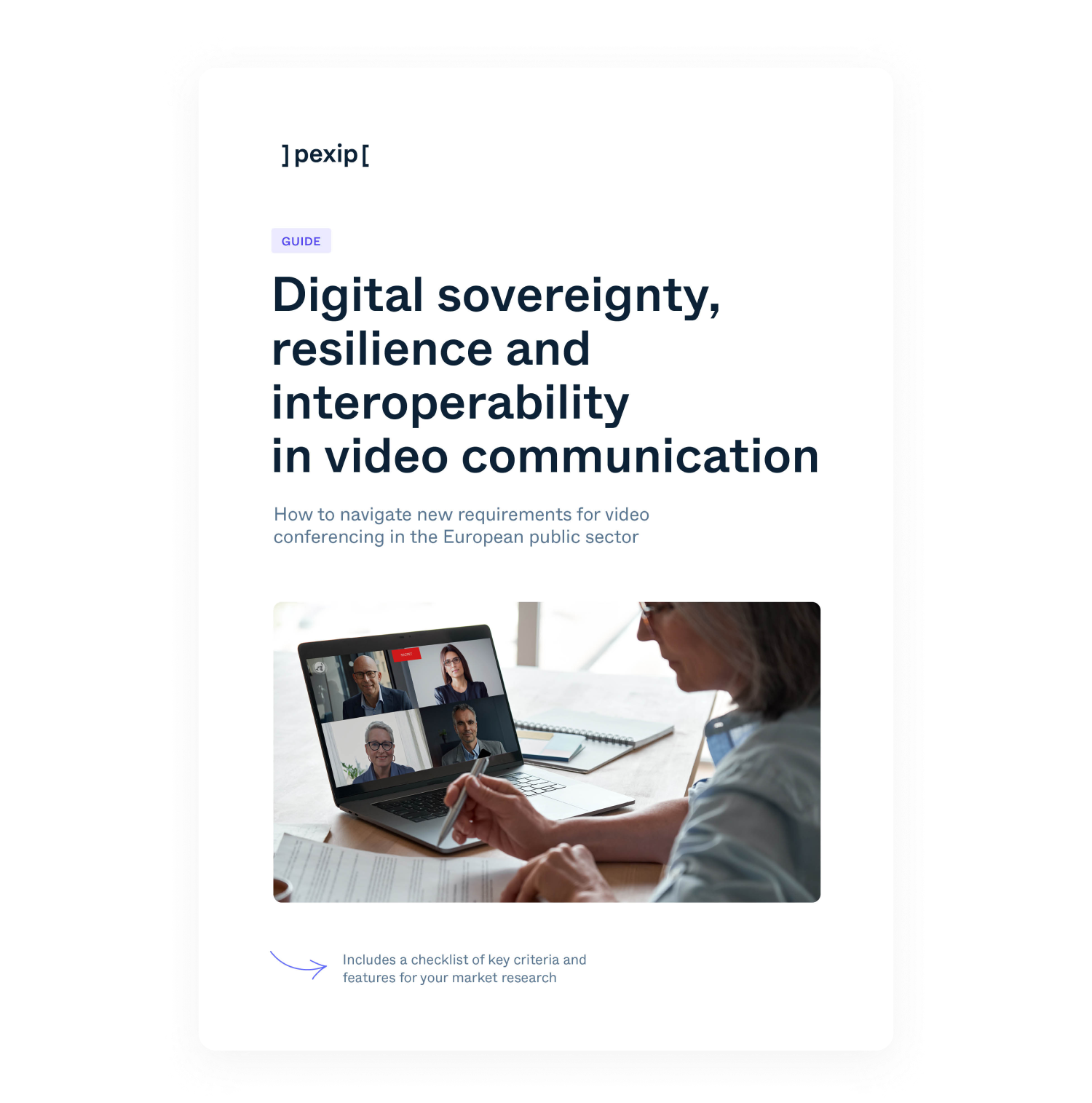Digital sovereignty and resilience in video communication

Navigating new requirements for video conferencing in the public sector
With increasing regulatory pressure in the public sector, particularly in government, defense, police, and state IT services, organizations must now rethink how they choose their video conferencing solutions. Privacy, security and digital sovereignty are now critical factors driving the selection process. Pexip works with some of the most highly regulated institutions worldwide and has identified five core requirements that public sector organizations need to meet when procuring video conferencing solutions.
5 key requirements for video conferencing solutions in public sector tenders
1. Data sovereignty
Data sovereignty ensures that all sensitive data—video, audio, metadata—remains under national jurisdiction, complying with local data protection laws.
- Pexip provides full control over data storage and processing, allowing organizations to choose their hosting environment—whether on-premises, in a private cloud, or a hybrid setup.
- This ensures that media and metadata remain compliant with national sovereignty requirements.
2. Operational sovereignty
Organizations need full control over how their video conferencing solution is hosted, updated, and managed to ensure smooth operation and uninterrupted service.
- Pexip’s flexible architecture gives IT teams complete autonomy over updates and system upgrades.
- Its distributed setup ensures that if one node fails, another takes over, guaranteeing operational continuity and meeting redundancy requirements.
3. Software sovereignty
Customizability and flexibility are crucial for adapting video solutions to meet organizational needs and avoiding vendor lock-in.
- Pexip offers a highly customizable platform with open APIs, allowing seamless integration with third-party systems and enabling organizations to tailor the software to their exact needs.
- This ensures that public sector organizations retain long-term control over their video tools without being tied to one vendor.
4. Cyber resilience
With the rise of cyber threats, video conferencing systems must be resilient, secure, and able to fend off attacks, while ensuring reliable communication.
- Pexip employs a zero trust-based security model with Attribute-Based Access Control (ABAC) to ensure only authorized participants can join meetings.
- Its resilient, distributed architecture allows communication to continue seamlessly, even during attacks or outages, by rerouting traffic to backup nodes.
5. Interoperability
Public sector organizations require video solutions that can work across a variety of platforms and technologies without creating silos.
- Pexip’s support for open standards such as WebRTC and SIP ensures interoperability with other systems like Microsoft Teams, Cisco, and Skype for Business.
- This makes it easy for public sector teams to collaborate securely, regardless of the technology being used by other organizations.
Checklist: How to choose the right video conferencing solution for the public sector
When evaluating video communication tools, public sector organizations should prioritize:
- Data sovereignty: Ensuring national jurisdiction over data
- Operational sovereignty: Maintaining full control over the hosting environment
- Software sovereignty: Customization and integration with other systems
- Cyber resilience: Strong defenses against cyber threats
- Interoperability: Seamless integration across platforms and devices
Ready to ensure your video communication solutions meet the latest regulatory standards?
Download our detailed checklist to help you evaluate solutions that align with the new requirements for digital sovereignty, resilience, and interoperability in the public sector.
Want the full guide?
Learn more about:
- How these requirements impact your choice for video communication
- How Pexip Secure Meetings meets each requirement.
- A checklist of key factors and features to look for when procuring a secure video conferencing solution.
Get your free copy now.
